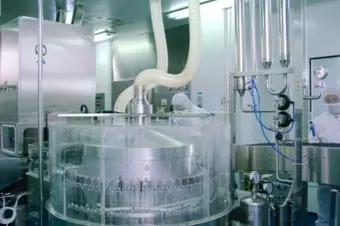Doxifluridine API Manufacturers & Suppliers
Find, compare & contact
Filters
Custom request?
Type
Production region
Qualifications
Country of origin
Distributor
Produced in:
Established in: 1987
MOQ: 1 kg
Employees: 50+

ISO 9001:2015 & SGS audited supplier

One-stop CDMO Solutions for APl and Key intermediates

Specialized in APIs & Pharmaceutical Intermediates for 38 years
+ 0
All certificates
How does it work?
You can register for free as long as you are registering on behalf of a legal company related to the pharmaceutical industry
Search in the search bar the product that you’re looking for. We’ll show you an overview of all available suppliers. Use the filters to select the relevant suppliers only
Have you found interesting suppliers? Then it’s time to contact them. Use the send inquiry button and send them a message. You can send for each product, 3 inquiries per week
Suppliers get notified by Pharmaoffer that they’ve received a new inquiry. They will come back to you with their questions, certificates, and offer in the chat on Pharmaoffer. We will send you an email in case of any news
Does the supplier meet your quality and commercial requirements? Then you can place the order. Just follow the steps of our order module
Looking for Doxifluridine API 3094-09-5?
- Description:
- Here you will find a list of producers, manufacturers and distributors of Doxifluridine. You can filter on certificates such as GMP, FDA, CEP, Written Confirmation and more. Send inquiries for free and get in direct contact with the supplier of your choice.
- API | Excipient name:
- Doxifluridine
- Synonyms:
- 1-(β-D-5-desoxyribofuranoxyl)-5-fluoruracil , 5-fluoro-5'-deoxyuridine , 5'-deoxy-5-fluorouridine , 5'-DFUR , Doxifluridina , Doxifluridinum
- Cas Number:
- 3094-09-5
- DrugBank number:
- DB12947
- Unique Ingredient Identifier:
- V1JK16Y2JP
General Description:
Doxifluridine, identified by CAS number 3094-09-5, is a notable compound with significant therapeutic applications. Doxifluridine has been investigated for the treatment of Stomach Cancer.
Classification:
Doxifluridine belongs to the class of organic compounds known as 5'-deoxyribonucleosides. These are nucleosides in which the oxygen atom at the 5'position of the ribose moiety has been replaced by another atom. The nucleobases here are limited to purine, pyrimidine, and pyridine derivatives, classified under the direct parent group 5'-deoxyribonucleosides. This compound is a part of the Organic compounds, falling under the Nucleosides, nucleotides, and analogues superclass, and categorized within the 5'-deoxyribonucleosides class, specifically within the None subclass.
Categories:
Doxifluridine is categorized under the following therapeutic classes: Antimetabolites, Antineoplastic Agents, Appetite Stimulants, Central Nervous System Agents, Central Nervous System Stimulants, Deoxyribonucleosides, Deoxyuridine, Fluoropyrimidines, Fluorouracil and prodrugs, Immunologic Factors, Immunosuppressive Agents, Isomerism, Noxae, Nucleic Acids, Nucleotides, and Nucleosides, Nucleosides, Pyrimidine Nucleosides, Pyrimidines, Toxic Actions. These classifications highlight the drug's diverse therapeutic applications and its importance in treating various conditions.
Doxifluridine is a type of Antimetabolites
Antimetabolites are a prominent category of pharmaceutical active pharmaceutical ingredients (APIs) utilized in the treatment of various diseases, particularly cancer. These compounds are structurally similar to naturally occurring metabolites essential for cellular processes such as DNA and RNA synthesis. By mimicking these metabolites, antimetabolites interfere with the normal functioning of cellular pathways, leading to inhibition of cancer cell growth and proliferation.
One of the widely used antimetabolites is methotrexate, a folic acid antagonist that inhibits the enzyme dihydrofolate reductase, disrupting the production of DNA and RNA. This disruption impedes the growth of rapidly dividing cancer cells. Another common antimetabolite is 5-fluorouracil (5-FU), which inhibits the enzyme thymidylate synthase, thereby interfering with DNA synthesis and inhibiting cancer cell proliferation.
Antimetabolites can be classified into several subcategories based on their mechanism of action and chemical structure. These include purine and pyrimidine analogs, folic acid antagonists, and pyrimidine synthesis inhibitors. Examples of antimetabolites in these subcategories include azathioprine, cytarabine, and gemcitabine.
Despite their effectiveness, antimetabolites can exhibit certain side effects due to their interference with normal cellular processes. These side effects may include gastrointestinal disturbances, myelosuppression (reduced production of blood cells), and hepatotoxicity.
In conclusion, antimetabolites are a vital category of pharmaceutical APIs used in the treatment of various diseases, especially cancer. By mimicking natural metabolites and disrupting crucial cellular processes, these compounds effectively inhibit cancer cell growth and proliferation. However, their usage should be carefully monitored due to potential side effects.
Doxifluridine manufacturers | traders | suppliers
We have 1 companies offering Doxifluridine produced in 0 different countries.
Get in contact with the supplier of your choice:
- Sinoway industrial Co.,Ltd from China, product country of origin China
Let the supplier know whether you are looking for a product with a specific monograph such as EP (Ph. Eur.), USP, JP, BP or another quality. Or, whether you are looking for hydrochloride (HCl), anhydricum, base, micronisatum or a specific purity.
You can use the filters to find high-quality suppliers. For example, you can select GMP, FDA or ISO certified suppliers. Visit our FAQ page or use the chat box in the corner to get more information about Pharmaoffer.









